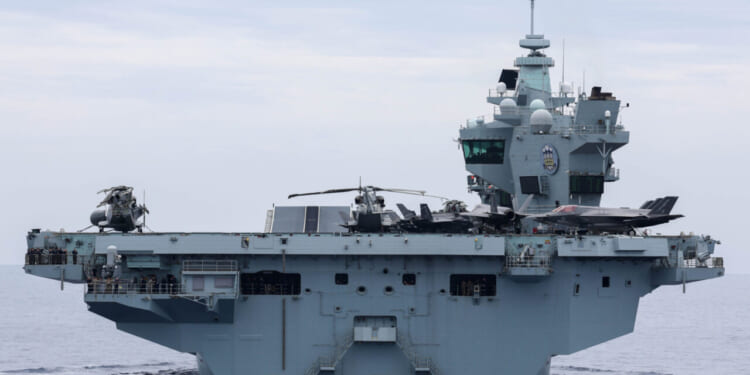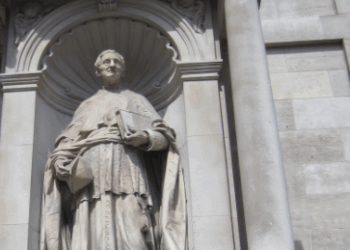Operation Highmast was a truly important operation for the Royal Navy and the British military.
Several NATO air forces are bringing together their fifth-generation stealth fighter jets over the Mediterranean Sea.
For the British military, the exercise is just the final note to a successful global deployment,
Operation Highmast and Exercise Falcon Strike 25
The three main goals of the exercise are the integration of fourth- and fifth-generation fighter jets, the refinement of NATO air combat tactics, and the strengthening of the logistical cooperation among F-35 operators.
The exercise coincided with NATO declaring the HMS Prince of Wales and its F-35 squadrons as combat-ready.
In addition to the Royal Air Force and Royal Navy aircraft, the NATO exercise includes combat and support aircraft from Italy, France, Greece, and the United States.
Besides Greece and France, all of the other participants fly the F-35 Lightning II. Italy has ordered 75 F-35A and 30 F-35B fighters. The UK initially indicated a desire for a total of 138 aircraft of both versions, but has been fluctuating on the exact number of the final order. And the United States is the largest customer of the stealth fighter jet and the only country to have ordered all three versions, with a total order of 1,763 F-35As, 413 F-35Cs, and 280 F-35Bs. Greece will soon join the program and has ordered one squadron of 20 stealth fighter jets with an option for another 20 F-35As. France continues to invest in its domestic aviation industry and plans to design and manufacture a homegrown fifth- or sixth-generation fighter jet in the future.
The NATO exercise comes at the end of Operation Highmast, an eight-month global deployment of the HMS Prince of Wales aircraft carrier battlegroup across Europe, the Middle East, and the Indo-Pacific. Royal Air Force and Royal Navy F-35Bs on board the HMS Prince of Wales are taking part in the exercise as the aircraft carrier returns to the UK.
“Over the past eight months, the Royal Air Force has delivered a truly global contribution through Operation Highmast—from the UK to the Mediterranean, across the Middle East and deep into the Indo-Pacific,” Air Marshal Allan Marshall, air and space commander, said in a service press release.
“This has been a sustained demonstration of reach, resilience and relevance: projecting air and space power, strengthening partnerships and reaffirming the UK’s commitment to regional security,” Marshall added.
Marshall’s words reveal London’s desire to assume some of its former power.
The (British) Empire Strikes Back
Operation Highmast was a truly important operation, specifically for the Royal Navy but also for the wider British military.
The global deployment of the HMS Prince of Wales and its supporting warships and aircraft marked the return of the UK to the global stage. Only 80 years ago, the UK still ruled the waves and had a global presence. But following the end of World War II, the UK gradually retreated from the world to focus increasingly more on pressing domestic issues.
It successfully fought for and recaptured the Falkland Islands from Argentina in 1982, an impressive feat that required hundreds of warships, support vessels, and aircraft to deploy thousands of miles away. It also participated in US-led operations in Iraq (twice), the Balkans, Afghanistan, and Syria. But the UK did not have the means to independently project power and command more respect on the international stage until it commissioned the HMS Prince of Wales and its sister ship, the HMS Queen Elizabeth.
The successful global cruise of the former in some of the world’s most strategic waters, including the South China Sea and the Gulf of Aden, showcases that the UK is coming back to assume a bigger role in international affairs after decades of retrenchment.
About the Author: Stavros Atlamazoglou
Stavros Atlamazoglou is a seasoned defense journalist specializing in special operations and a Hellenic Army veteran (national service with the 575th Marine Battalion and Army HQ). He holds a BA from the Johns Hopkins University and an MA from the Johns Hopkins’ School of Advanced International Studies (SAIS). His work has been featured in Business Insider, Sandboxx, and SOFREP.
Image: DVIDS.

















